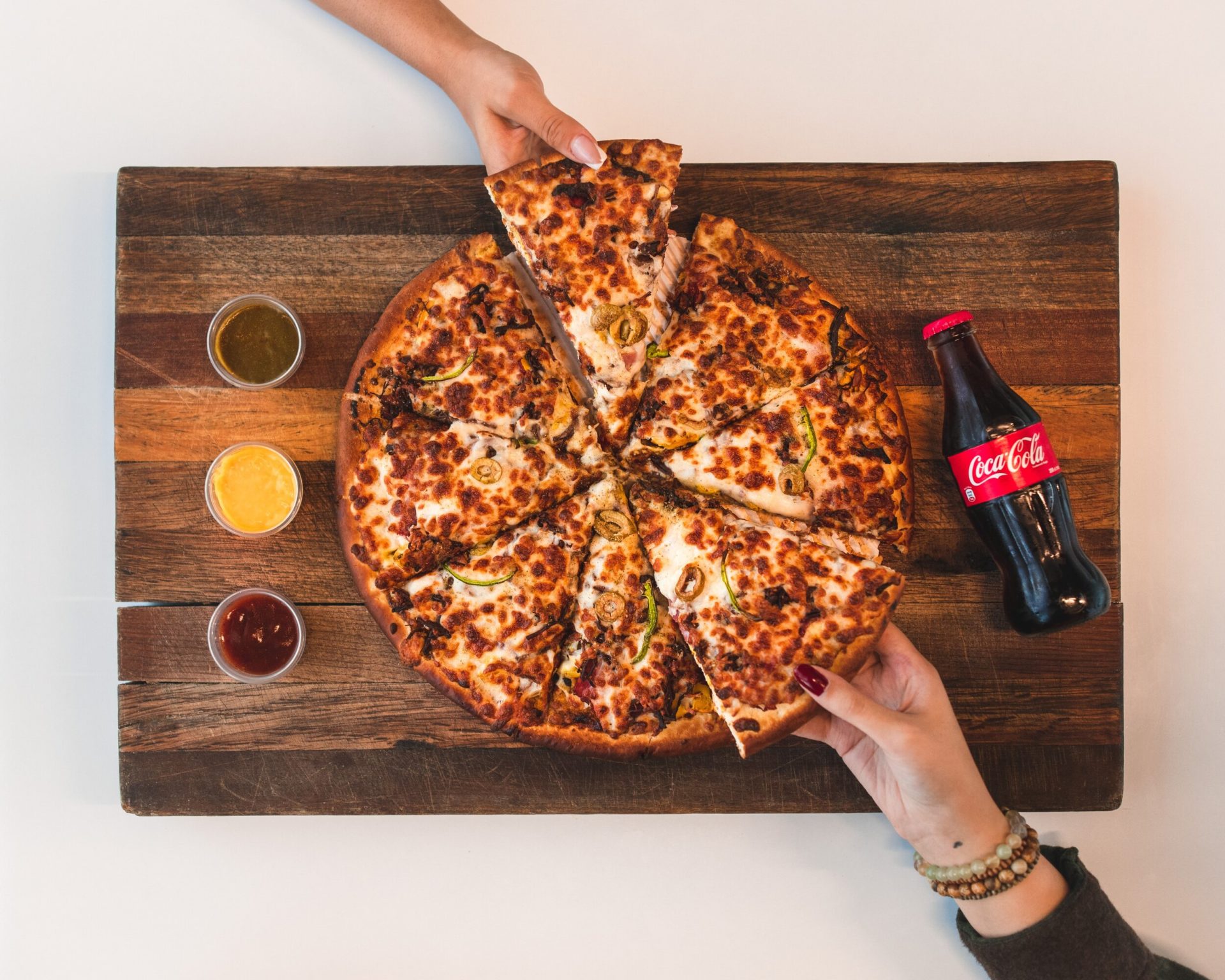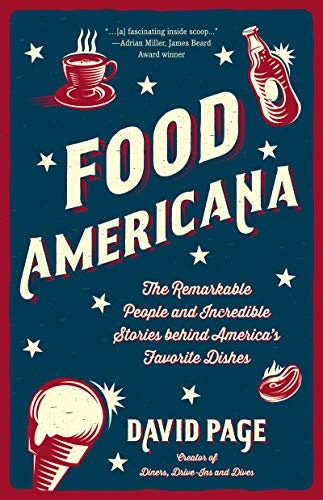
In his new book, Food Americana, David Page explains how Americans created a cuisine of their own from the foods of other countries and cultures, and how that cuisine continues to evolve today.
When I was a child, my grandmother used to make me something she, for some reason, called Jewish spaghetti. It was pasta, boiled, then fried in a pan with onions and ketchup. And yes, it was as awful as it sounds. But in its own way, it is a perfect example of how America created a cuisine: a Jewish woman, who came to this country to escape the violent anti-Semitism of pre-World-War-Two Poland, cooking some version of an Italian dish that she saw as an American staple. Interesting to consider among current debates over immigration, the history of American food is the story of embracing another country’s cuisine, then changing it. Often to more fully please our palates. Often because of circumstance, such as the availability of ingredients.
Pizza, for example, was brought by immigrants from Naples. Once here, they attempted to re-create the foods they had eaten back home, but circumstances would make that complicated. Pizza historian Scott Wiener says, “The New York style [of pizza] was birthed from applying the method of Naples to the ingredients and technology of America.” There was no other option. Pizza ovens in Naples burned wood. Ovens in New York were larger and burned coal. That required a longer bake time and, combined with America’s higher-protein wheat, created a crisper, less chewy crust. And it was impossible to get mozzarella from Italy, since it would spoil on the eleven-day transatlantic boat trip, so domestic mozzarella, not quite the same, had to be used instead. But what they created out of necessity was remarkable, and New York-style pizza remains widely popular today, along with some thirty other regional American styles of pizza created over succeeding years, from Chicago deep dish to New Haven pizza topped with clams. And what has become the go-to for millions of Americans, take-out pizza from a national chain, culinarily unimpressive but dependable and deliverable.
For millions of Americans, even in cities with a great pizza history, chain pizza became and remained the standard for years. But times have been changing. “There is a renaissance now in pizza,” says Tony Gemignani, the first American to be named World Champion at the World Pizza Cup in Naples. “Everything’s evolving, the ingredients are evolving.” He says the improvements are “making pizza great again.” To a significant extent by returning to pizza’s roots, so called artisanal pizza, baked in wood-fired ovens, with fresh local ingredients, dough crafted carefully from the best flour, and everything done by hand.
Tony Cerimele, who owns New Columbus Pizza Co. in Nesquehoning, Pennsylvania says, “You’re seeing a lot more of people like myself and independent guys changing how we make dough, changing what we offer, using better ingredients. Using top notch stuff that we weren’t doing five, six, seven, eight, nine, ten years ago.”
A similar progression has taken place with many other foods from elsewhere that have been embraced by Americans so thoroughly that they, too became everyday elements of our national cuisine.
Mexican food for example. In 1848, the treaty ending the Mexican American War created a new border and the half of Mexico north of that line became part of America. Gustavo Arellano, author of Taco USA: How Mexican Food Conquered America, says, “There’s that saying, we didn’t cross the border, the border crossed us.” And on both sides of that border, the food was the same, the food of the norteños, the residents of what had been Northern Mexico. One of many Mexican regional cuisines, it included tortillas, tamales, enchiladas, and frijoles. And it was the evolution of this cuisine—reduced in spiciness to suit Anglo tastes, and with replacements for Mexican ingredients not available here, such as American yellow cheese replacing the white cheese of Mexico—that would form the basis of Mexican American food for a hundred and fifty years.
It would combine versions of traditional dishes with others created on this side of the border. Tex-Mex combination plates, heavy on cheese and refried beans; so-called Cal-Mex dishes such as fish tacos and guacamole; green chile sauce from New Mexico; fajitas on a sizzling platter from Texas; huge Mission burritos created in San Francisco.
Some of those and other standards became the tentpoles of a familiar Mexican American menu available pretty much anywhere, which eventually came under fire as not “authentic,” not the food actually eaten in Mexico. Much of it wasn’t—it had evolved into Mexican American, delicious dishes that had become a part of a broader American cuisine. While I believe the criticism was unfair—and certainly snobby—it did spur an American interest in Mexico’s many regional cuisines.
Increased immigration from various parts of Mexico has made regional dishes available to many Americans for the first time. Moles from places such as Puebla for example, chile-based sauces with a variety of ingredients often including chocolate. The regional dish of the moment, unheard of in most of the US just a few years ago, is birria de res, beef stewed in a spicy sauce, served in tacos that are folded over, grilled, and served with a cup of the cooking liquid for dipping. In November of 2019, influential New York Times food critic Pete Wells gushed over them as served at the Birria-Landia food truck in the New York borough of Queens. Americans from coast to coast have now fallen in love with birria de res. As the Mexican portion of American cuisine continues to expand.
There is also Chinese food. The range of Chinese food now available in the US has grown dramatically in recent years, also driven by immigration. Fuchsia Dunlop, writer, cookbook author, winner of four James Beard awards, and an acclaimed expert on Chinese food says, “There are a whole lot more Chinese students and immigrants who are not just the chefs, but the market for the Chinese restaurants. So Chinese restaurants these days do not need to adapt to mainstream American Western tastes.” Hence, a proliferation of restaurants serving dishes such as “dry pot,” a stir-fried assortment of whatever a customer chooses, with options including offal, such as tripe, kidney, and artery; fish balls; duck soup; and fish in hot chili oil.
At the Longfei Restaurant in Bloomington, Indiana, owner Xiao Fei Zhou says, “I have authentic Chinese food and I have American Chinese food.” Zhou, who came to America from Shanghai when he was fifteen, says the “authentic” section is aimed at the many Chinese students attending nearby Indiana University, though they are not the only customers making that choice. “There are lots of American people that like authentic Chinese food,” he says. “So, I just say in case they don’t like it, they have a chance to order American Chinese food.”
Some Chinese chefs predict—or hope—that more restaurants in mid-America will follow Longfei’s example, adding regional Chinese dishes to their menus. Others are not so optimistic.
Still, there is clearly a renaissance underway right now in Chinese cooking, even if it is mostly on the coasts. It’s being called “Chinese 2.0,” innovative young chefs breaking new ground in a variety of ways. Some replicating traditional Chinese cuisines most Americans don’t know. Others using the food they grew up with as inspiration to evolve Chinese food in America, combining traditional tastes and techniques with American ingredients in novel new ways, attempting to broaden the definition and presentation of Chinese food.
They are fighting to bring Chinese food the respect they believe it deserves, to convince American diners it’s worth more than takeout prices, in often trendy restaurants that don’t conform to the traditional Chinese American aesthetic. Chris Cheung of New York’s East Wind Snack Shop says he likes to riff on the classics: “What I’m specifically doing is drawing back from my childhood memories of what Chinese food meant to me and made me happy and all those tastes and flavors, and the picture that I’m trying to create and the image I’m trying to portray is from that.”
Recent years have been revolutionary times for American cuisine, as chefs creatively explore the roots of our common foods and expand their interpretations of them. This raises the question: What cuisine will be the next to entice so many of us that it becomes part of our national menu?
Thai food, for example, extremely popular in many places, has not yet become truly woven into the overall American diet. Peruvian cuisine, championed by many chefs and food writers hasn’t crossed over either. Or Vietnamese, popular in many places but still not as mainstream as sushi or tacos.
Whichever cuisine is next, there is a cautionary corollary. Many, many Americans find it easier to embrace a culture’s food than to embrace the people who created it. There is no more troubling issue in our country today than racism. The death of George Floyd. Violence against Asian Americans. Bitter debate about immigration through Mexico. Increasingly visible anti-Semitism. And so much more. Even as, every day, virtually every “American” food we eat was brought to us by people who came from someplace else.
______________________________________________________________________________________________________________________







